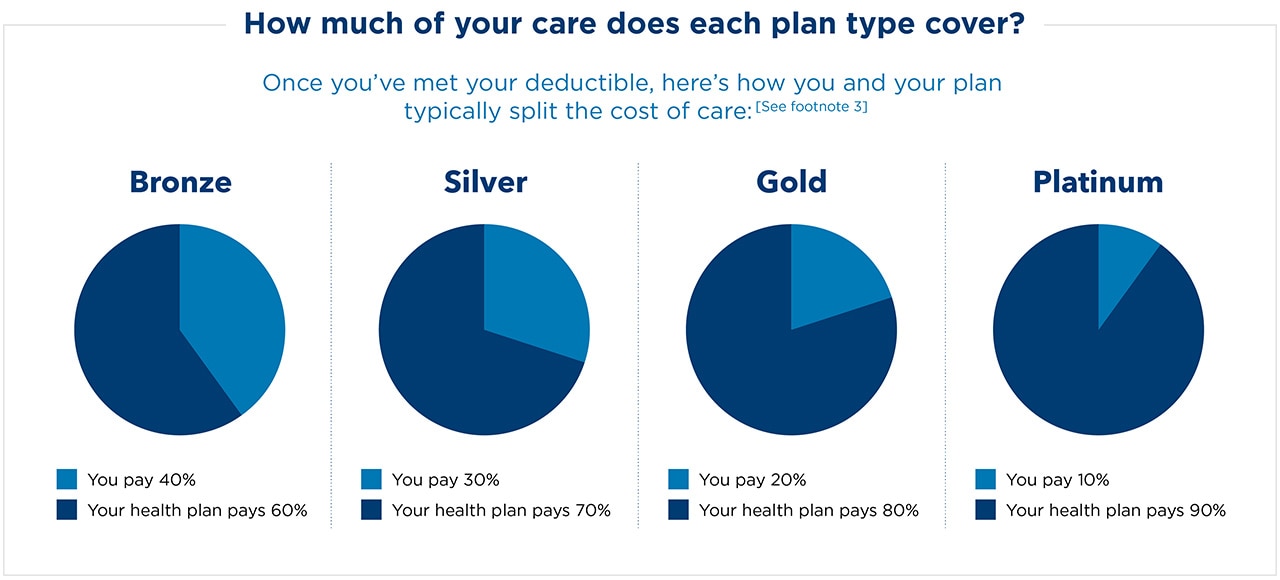 Simply put, health insurance works by helping you pay for medical care and services, so you don’t have to pay all your health care costs on your own. Choosing the right coverage is important — and there’s a lot to consider.
The best health plan for you is one that meets your health care needs, budget, and expectations. But it can be tough to know what to look for — and what to avoid. Asking yourself these 3 questions can help you make the right choice for yourself and your family.
Simply put, health insurance works by helping you pay for medical care and services, so you don’t have to pay all your health care costs on your own. Choosing the right coverage is important — and there’s a lot to consider.
The best health plan for you is one that meets your health care needs, budget, and expectations. But it can be tough to know what to look for — and what to avoid. Asking yourself these 3 questions can help you make the right choice for yourself and your family.
Question 1: How do I choose affordable health insurance?
Understanding your total health care costs is key to getting the most out of your plan and avoiding potentially expensive surprises.
- Premium: Your monthly plan cost. This is the cost of your coverage and doesn’t include the out-of-pocket cost for each service you receive — you’ll always pay at least this amount each month, regardless of how much or how little care you receive.
- Deductible: How much you have to spend for covered health care services before your health plan starts to pay for anything beyond no-cost preventive care. After you reach your deductible, you’ll typically just pay a copay or coinsurance.
- Copay: A flat fee you pay for specific services covered under your health care plan. Copays may apply whether or not you’ve met your deductible.
- Coinsurance: A percentage of the cost that you’re responsible for paying when you receive a specific service. Coinsurance may apply whether or not you’ve met your deductible. People often confuse coinsurance with copays, but they’re different. Your plan may have copays or coinsurance — or it may have both.
- Out-of-pocket maximum: The most out-of-pocket costs you’ll have to spend for most covered services within a year. After you reach this amount, your health plan pays 100% for most covered services. You’re only responsible for paying your monthly premium and, depending on your plan, copays and/or coinsurance.
![People with the wrong plan pay an extra $2,000+ every year for health care [See footnote 2]](https://healthy.kaiserpermanente.org/content/dam/kporg/support/people-with-the-wrong-plan-pay/people-with-the-wrong-plan-pay-l-dt.jpg)
Question 2: How do health plans work?
The most common types of health plans are HMO and PPO. Learn the difference between HMO and PPO plans to figure out which choice is right for you. Beyond that, getting to know the 4 coverage levels — also called metal tiers — within those plan types will help you understand:
- What’s covered
- What you’re responsible for paying
- What’s the best fit for your health care needs
Health insurance plan types — the 4 metal tiers

Bronze: Lowest monthly premium | Highest deductible | Highest out-of-pocket costs for care
A good choice for healthy people who rarely see the doctor and want a low-cost way to protect themselves in case they occasionally get injured or sick.

Silver: Moderate monthly premium | Moderate deductible | Moderate out-of-pocket costs for care
A good choice for generally healthy people willing to pay a little more each month to have fewer out-of-pocket expenses before your health plan starts covering the cost of care.

Gold: Higher monthly premium | Lower deductible | Lower out-of-pocket costs for care
A good choice for people with dependents and who use health care services regularly throughout the year.


Question 3: What else is included?
The healthier you are, the lower your health care costs will be. When you’re comparing health plans, look for tools and services that make it easy to access care, and perks that help you live healthier overall. For example:

Convenient care options that make it easy to access in-person or virtual care.

Self-care apps to support a healthy mind, body, and spirit.

Healthy lifestyle programs that can help you make healthy lifestyle changes.

Fitness deals with reduced rates on studios, gyms, fitness gear, and online classes.
Now you’re ready to choose a health insurance plan
You deserve a health plan that fits your health care needs and budget — and truly helps you thrive. Now that you know what’s most important to consider when shopping for health insurance, it should be easier to make the right choice.





